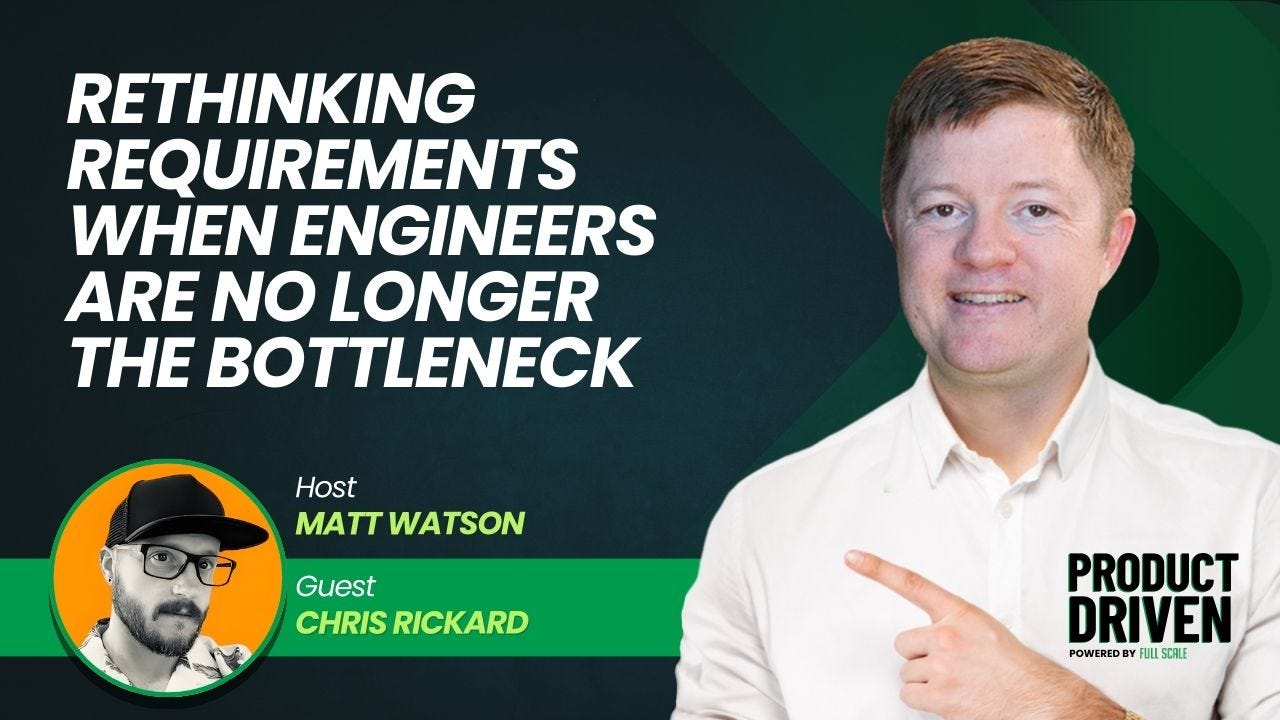When Engineers Aren’t the Bottleneck Anymore, Your Process Better Catch Up
We spent years trying to make engineers faster. What happens when they actually are?
For the past two decades, engineering leaders have been obsessed with velocity. Ship faster. Automate more. Unblock the team. Move.
But we’re finally reaching a turning point.
Thanks to AI-assisted development, low-code tools, and platform maturity, the bottleneck has started to shift. Engineers aren’t the constraint anymore.
So what is?
The bottleneck is now product clarity.
I see it across nearly every team I work with.
The developers are moving. But they’re building from vague ideas, hand-wavy goals, or half-baked specs. The speed is there—but the direction is off.
And that’s the real problem.
Speed without clarity doesn’t create progress. It creates waste.
In a world where code can be generated, tested, and deployed faster than ever, the constraint moves upstream.
It’s no longer about how fast your engineers can execute. It’s about how well your organization can decide what’s worth building in the first place.
“We realized requirements weren’t just annoying—they were necessary.”
That line stuck with me during my conversation with Chris Rickard, the founder of Userdoc.
He started out like most of us—as a software engineer who hated requirements. But once he ran his own software consultancy, his view flipped.
When you’re responsible for delivering a six-month build for an enterprise client, “we’ll figure it out as we go” doesn’t cut it.
You need shared understanding. You need clarity. You need something more structured than Post-it notes and good intentions.
So he built his own system—first manually, then as software.
Now his whole company is built around this idea: requirements are the connective tissue that hold product vision together as it scales.
It’s not about going back to waterfall.
It’s about building smarter guardrails—especially now that the engineers can move faster than ever.
The Agile Lie: “We Don’t Need Requirements Anymore”
We swung the pendulum hard over the past decade.
Agile told us requirements were overhead. Just start with a user story, write the code, and figure the rest out in standups.
That worked for small teams with short timelines and direct access to users. But when your product spans dozens of features, multiple teams, and months of work?
You can’t “scrum” your way out of ambiguity.
And AI has made this even more dangerous. It can generate code faster—but it can’t tell you if you’re building the right thing.
If your process can’t provide direction, AI just makes the wrong work happen faster.
What Modern Requirements Look Like
Modern requirements aren’t mile-long Word docs. They’re structured, living documents that reflect what the product actually is and why it matters.
They include:
Who you’re building for (user personas)
What the user needs to do (user stories)
How the system needs to behave (functional and non-functional requirements)
What success looks like (acceptance criteria and business goals)
Chris’s platform, for example, uses AI to transform a spec or vision doc into a full requirements model. It pulls out users, goals, features—even flags what’s missing. Then the human steps in and adds judgment.
It’s not about replacing people. It’s about speeding up the parts that slow them down.
If You’re Still Optimizing for Engineer Velocity, You’re Solving the Wrong Problem
If your biggest issue is “we’re not shipping fast enough,” that’s a red flag.
It probably means:
Your team doesn’t have clarity on what matters
Your PMs are spread too thin and writing specs in a panic
Your engineers are building from vague ideas and constant interruptions
You don’t need to move faster. You need to make better decisions about what to build—and why.
Your Process Has to Evolve Too
When engineers stop being the constraint, your leadership mindset has to evolve.
That means:
Investing in product clarity as a system, not just a role
Giving requirements their own tooling, not just buried tickets
Treating alignment as a deliverable, not just a meeting outcome
Your team’s ability to execute isn’t the problem.
Your process for deciding what to execute is.
🎧 AI moved the bottleneck upstream.
Now it’s your move.
If your team is still building from assumptions, tickets written under pressure, or last-minute planning sessions, you’re setting them up to ship fast—and miss.
It’s time to rethink how you do product clarity. And it starts with how you handle requirements.
To hear how Chris Rickard is tackling this shift with AI, product teams, and evolving processes, check out our full conversation on the Product Driven podcast.
You’ll never look at requirements the same way again.

